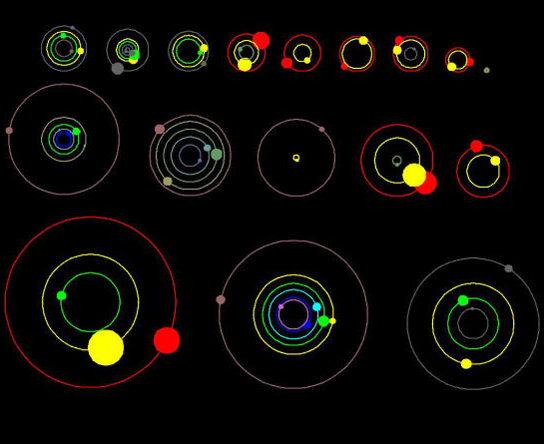
NASA’s Kepler mission has found 11 new planetary systems and confirmed 26 more planets, doubling the number of verified Kepler planets and tripling the stars known to have multiple planets.
NASA’s Kepler mission has discovered 11 new planetary systems, with an additional 26 confirmed planets, which actually doubles the number of verified Kepler planets and triples the number of stars known to have more than one planet. It’s hoped that such systems might elucidate how planets are formed.
The newly discovered planets, that range in size from 1.5 times the radius of Earth to larger than Jupiter, will need to be observed further to determine which are rocky, Earth-like planets and which have thick, gaseous atmospheres like Neptune. Fifteen are between the Earth and Neptune in size. Their orbits around their stars vary from 6 to 143 days. All of the planets are closer to their star than Venus is to Sol.

Prior to the Kepler mission, astronomers knew of about 500 exoplanets across the whole sky. In two years, while observing a small patch of sky, no bigger than a fist, Kepler discovered more than 60 planets and more than 2,300 candidates. This could mean that the galaxy is loaded with planets of all sizes and orbits.
Kepler identifies potential planet candidates by repeatedly measuring the change in brightness of more than 150,000 stars to detect when a planet passes in front of its host star. This passage creates a shadow toward Earth and the Kepler spacecraft.
Confirming this takes additional observations and time-consuming analysis. The new planets were confirmed using new techniques. Kepler detected the gravitational pull of the planets on each other, in tightly packed planetary systems, which causes some planets to accelerate and others to decelerate. This is called Transit Timing Variations (TTVs).
Planetary systems with TTVs can be quickly verified without extensive observations. Kepler-33, an older star that’s more massive than Sol, had the most planets. The discoveries were published in four different papers in the Astrophysics Journal and the Monthly Notices of the Royal Astronomical Society.









Be the first to comment on "NASA’s Kepler Mission Discovers 11 New Extrasolar Systems with 26 Exoplanets"